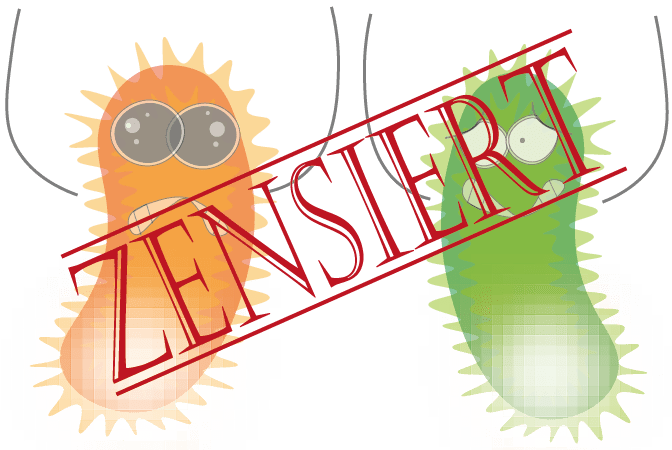Bacterial reproduction


It is about time to focus on a private topic. Especially since — even though some might consider it a private matter — it is actually happening around us, on us… even within us — twenty-four-seven! All you’d need to observe this would be the ability to zoom in on your surrounding 1000-fold — and consequently perhaps wouldn’t know where to look anymore.

But since this blog claims to be scientific, let’s get serious: bacterial reproduction is based on proliferation… you could also call it cell division. Thereby, the whole bacterial cell devices into two identical cells — including their organelles, shape, and genetic information.
When microbiologists talk about growth, they don’t mean they measure the size of a bacterial cell but are talking of the bacterial cell number instead.

In this regard, scientists tend to use another sophisticated term called generation time which more or less describes the amount of time needed for a bacterial population to double. It so happens that some bacteria like E. coli (an inhabitant of our gut) can reproduce and multiply all 20–30 minutes. Bacterial reproduction snow and ice on the other hand can take much longer and result in generation times of several years. Therefore it is to remember: reproduction usually happens faster at warm temperatures (not too warm though) and the doubling time, in general, is higher in natural environments than it is in the lab because of stressing factors.
Either way, let’s play an intellectual game. Therefore we assume that a bacterial cell that is resistant against any antibiotic you can think of or is even multi-resistant doubles every 30 minutes through cell division (like it potentially could within our gut). Obviously, microbes need to eat and breathe which is why we further assume that they are living in a perfect (microbial) world without limitations in nutrients and without death. That way after just a single day, this one single bacterial cell would have exponentially multiplied into 3^14 cells. As a number: 4 782 969 cells! And all of them contain the resistance gene against the antibiotic you thought of and could potentially spread it to other bacterial cells (and species) via bacterial conjugation.

Let that number sink for a moment. Got it? Let’s move on!
Even though conjugation, transformation, and transduction may be nothing to crow about, they are actually quite fascinating. All of these things are ways to transfer genetic information from one bacterial cell to another. And they somehow get close to the traditional idea of reproduction we have.
Conjugation, as an example, provides bacteria with the possibility to share genetic elements — like antibiotic resistance genes — across the species border. Ignoring all privacy concerns again, we gotta take a closer look at this process. When two bacterial cells meet and want to share their genetic information (coded on a so-called “plasmid”), the one containing the DNA fragment worth sharing uses its “pilus” (often referred to as “sex-pili”… you probably get why…) to establish a cell-cell contact. With the help of enzymes within the donor, the plasmid that contains the genetic information to be shared is doubled and transferred to the receiving cell. The two cells then separate and now both are donors for this genetic element and can conjugate with new bacteria.
That’s pretty much as close as you can get to “classic” reproduction within microbes.

However, even bacteria need to play after some rules of mother nature, and not every plasmid is the same. Therefore some DNA structures can only be shared between some species, some can’t be shared at all while others can be shared across species borders. Some of those can even be shared between bacteria and fungi.
Either way, apart from sharing genetic information via conjugation, bacteria can also rely on transduction and transformation. While the latter is just a fancy term for the ability of microbes to take up “free-flowing” DNA from their environment into their cell, transduction requires the involvement of viruses. If you want to check out how these processes work in detail and how these add to the rise of superbugs, check out this blog post!
All in all, we just learned that even though bacterial growth is based on simple cell division, genetic material can also be shared differently. These processes are especially to consider when talking about the spread of antibiotic resistance and should not be overlooked when tackling a global crisis.
The way bacterial reproduction works and how they are able to share genetic information are what makes them so successful in adapting to their environment. And in the end, we should never forget, that bacteria existed long before we did and will very likely still be here when we’re gone long ago.